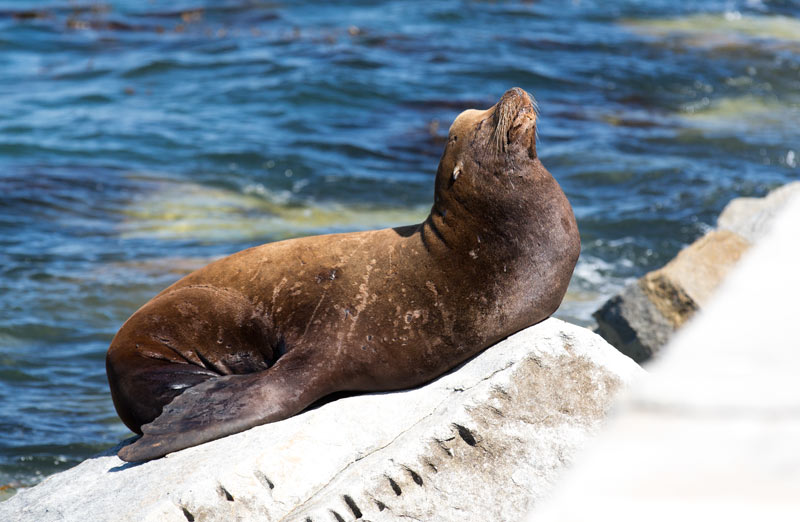Last Thursday was a very busy day for pregnant sea lions at California’s Channel Islands. Thanks to the phenomenon known as “synchronized reproduction” in which the animals breed, birth, and wean simultaneously, researchers have determined that June 15 was the peak of their births. As a result, more than half of new sea lion pups entered the world on that date. The remaining mothers-to-be will have their young within the two-week period before or after.
According to researchers at the Marine Mammal Center in Sausalito, around 60,000 to 70,000 pups will be born on the islands this month.
Female California sea lions have a 12-month reproductive cycle, consisting of a 9-month actual gestation and a 3-month delayed implantation of the fertilized egg before giving birth in June or July. After giving birth, the females will remain with their pups on shore continuously for 10 days and nurse them. After this, females will go on foraging trips lasting as long as three days, returning to nurse their pups for up to a day. They will then call their pups with distinctive calls recognized by their pups. A mother and pup can distinguish each other’s calls from those of other mothers and pups. The pups are weaned by a year, but can continue to suckle for another year.
The California sea lion is not currently endangered due to its large and increasing population size. The estimated population is 238,000–241,000 for the U.S. or Pacific Temperate stock, 75,000–85,000 for the Western Baja California or Pacific Tropical stock, and 31,393 for the population in the Gulf of California. Off the Pacific coast of the United States, sea lions are so numerous that they are close to carrying capacity.
According to the California Seal and Sea Lion Viewing Guidelines, swimmers and divers should remain 50 yards away from swimming seals and sea lions, 100 yards away if the animals are hauled out on land, and at least 100 feet away from seals and sea lions on land. Harrassment can carry penalties ranging from $100 to $13,000. Divers in the Channel Islands (and other areas where seal lions are with their young) should also be aware that both female and male sea lions will aggressively protect their young both on land and in the water and should likewise maintain their distance from the young pups.
If you spot a seal, sea lion, or other sea animal in distress, you can call the Marine Mammal Center at the appropriate number below:
(415) 289-SEAL – For the Anchor Bay and Fort Bragg region (including Sonoma and Mendocino coastlines, Jenner, the Sea Ranch and MacKerricher areas)
(805) 771-8300 – For the Morro Bay and San Luis Obispo region (including southern Big Sur, Moonstone Drive in Cambria and Shell Beach areas)
(831) 633-6298 – For the Monterey Bay region (including San Lorenzo River, Pebble Beach, and northern Big Sur areas)
After your call is placed, the Center will monitor the pup for 24 hours or more, depending on the situation, and if necessary trained volunteers and staff will rescue it safely. Also, check out What to do if you find a stranded marine mammal page on the Marine Mammal Center website.

